- Info
Hobas SewerLine® Pipes Help Protect Hawaii?s Beaches, US
Aloha Hobas®! Tourism is the engine of Hawaii’s economy and its famous beaches are a top attraction. A break in an old sewer line could close the favorite beaches, Waikiki and Ala Moana, and contamination might attack the fragile coral reef and other marine life in the area. Small wonder that the city and county officials work so hard to protect the environment.
Several sewer projects with HOBAS Pipes were conducted in the last years. One of them was the Wanaao Road/Keolu Drive Reconstruction Sewer with installation of a gravity sewer line, which includes CC-GRP Jacking Pipes installed by Frank Coluccio Construction. Bijan Khamanian, HOBAS Division Manager, explained, "HOBAS Pipes are very well accepted in both Honolulu and Maui Counties. Currently we are supplying 1,341 m of DE 914 mm jacking pipe to the Wanaao Avenue sewer, which connects to the Kalaheo project already in place. In Maui, Pipes diameter 610 mm, PN 10 were used in the construction of Wailuku force main, which was completed in February 2009. As a follow-up, Maui County is also using HOBAS Pipes diameter 1067 mm in the construction of the Wailuku Wastewater Pump Station as well. The largest HOBAS Pipe specified in projects in Hawaii is approximately 1,770 m of 1830 mm for the Beachwalk WWPS and Force Main project in Waikiki, which will go into construction in the fourth quarter of 2009. In addition, projects in Ewa Beach and Pearl City will follow later in 2009 and early 2010."
One of the projects of special interest is the Kalaheo Avenue Sewer in Honolulu, Hawaii. The sewer serves most of the seaward areas of Honolulu and HOBAS supplied jacking pipes DE 1219 mm to two separate contractors involved in the installation. The project included sewer reconstruction emergency work and a water line replacement project. This project involved a variety of trenchless methods. Aspects included rehabilitating 570 m of an existing DE 1372 mm gravity flow sewer main, six manholes and using microtunneling to install 1,617 m of a new sewer pipe.
Beachwalk Microtunneling Project Work was launched following a devastating break in an aging sewer line under Kaiolu Street. The project involved river crossing underneath both the Ala Wai Canal and Kaiolu Street at a depth of 12 m. This old line was replaced by the two new lines (774 m HOBAS Pipes DE 914) that hook up to an existing pipe on the bottom of the canal. This allowed contractors to dismantle and remove the aboveground pipes and pumps along the Ala Wai Boulevard.
The project team faced several initial challenges. This included the technical considerations of microtunneling, shaft construction methods, exact locations, sizes and depths, groundwater control and locating the existing underground utilities along the proposed route. The project originally called for temporary lines under Kaiolu Street, but was changed to make those lines part of the permanent fix to upgrade the city’s sewer system. Also, original plans requested one microtunneled line, but that was changed to two lines, giving the city an emergency backup in the event one line goes down and also allowing greater flexibility for needed maintenance.
Honolulu Force Main Microtunneled The original force main, a 50-year-old steel line, served about one third of the Honolulu area population. Several breaks made replacement a priority. The new line included 671 m of DE 1219 mm HOBAS Pressure Jacking Pipes and more than a dozen custom designed fittings. The alignment crosses under the Honolulu harbor, the area’s busiest port docks and a coastal highway. Facing these challenges, an all-trenchless installation was planned.
Project designers, Wilson Okamoto & Associates of Honolulu, specified only two products for the microtunneled pipes, concrete steel cylinder and CC-GRP. First, the pipes had to be both strong enough for jacking and capable of pressure service. Second, considering the seawater external environment and raw sanitary sewer flows inside, corrosion resistance was also important. Finally, reliability was paramount because of the difficulty of future access, depths up to 11 m and the critical nature of this application.
General contractor, Modern Continental of Boston, chose HOBAS Pipes as the most economical and reliable option. HOBAS Pipes were installed under the port docks and the highway to reach the main interceptor. The microtunneling was completed in two long and two short drives. The HOBAS Pipes performed flawlessly with no breaks and maximum loads of only 200 tons even on the 305 m push. One interjack station was inserted on each of the long drives, but neither was ever activated.
HOBAS fabricated a variety of fittings to match the required alignment. A bifurcation, reducers and several elbows were used to transition from two DE 914 mm HDPE lines to the single DE 1219 mm HOBAS Portion. Flanges and a wye permitted assembly to two valves and a lateral. Accurate detailing and fabrication of the various fittings facilitated an easy, precision "fit-up" in these complex areas. The completed system easily passed the installed field hydrotest with no leaks or breaks in any of the pipes or gasket-sealed joints. The project proceeded so trouble free that it was completed four months ahead of schedule and under budget.
Despite the presence of a local concrete pipe producer, HOBAS has been supplying pipe manufactured in Houston, Texas, to the Hawaii islands for 12 years. The warm islands of Hawaii undoubtedly have some of the worst sewer environments known. The corrosion resistance along with the pipe’s leak-free joints is helping keeping Hawaiian beaches clean. Further reasons for the wide use and acceptance in Hawaii are the durability of the pipe, not only in final use but also during shipping and handling. With an aging sewer infrastructure, Honolulu has planned more applications for HOBAS Pipes including sliplining, rehabilitation and microtunneling installations.
| Summary for various jobs in total |
|---|
| Year of Construction | 2000 - 2009 |
| Total Length of Pipe | 8,000 m |
| Pressure Class | PN 1 – PN 10 |
| Stiffness Class | Various |
| Diameter | 450 – 1500 mm |
| Installation method | Jacking, tunnel, direct bury |
| Application | SewerLine® |
| Client | Various |
| Contractor | Various |
| Advantages | Leak free, corrosion resistant, light weight |
More News and Articles

Die Entwässerungssysteme unserer Städte sind ein wesentlicher Bestandteil des kommunalen Anlagevermögens. Die große Zukunftsaufgabe, …

Die Entwässerungssysteme unserer Städte sind ein wesentlicher Bestandteil des kommunalen Anlagevermögens. Die große Zukunftsaufgabe, …

Die Entwässerungssysteme unserer Städte sind ein wesentlicher Bestandteil des kommunalen Anlagevermögens. Die große Zukunftsaufgabe, vor der viele Kommunen …
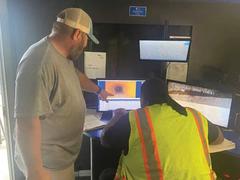
ITpipes announced it has secured $20 million in equity financing from Trilogy Search Partners and Miramar Equity Partners.
Known for its trusted and user-friendly platform, ITpipes …

With deep sadness we announce the loss of our founder and partner Prof Dr Dietrich Stein at the age of 85.
Engineers around the globe are thankful for his dedication to the inventions in the fields of sewers, …
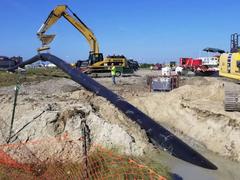
PPI’s MAB-11-2024 Covers HDPE Water Pipelines Up to 60-in. Diameter and 10,000-ft Long Pulls
Developed by the Municipal Advisory Board (MAB) – and published with the help of the members of the …

Mass deployment of connected leak loggers is being made possible by the latest technology, writes Tony Gwynne, global leakage solutions director, Ovarro
Water companies in England and Wales are …

The innovative customer service platform Kraken has made a successful transfer from energy to water. Ahead of their presentation at UKWIR’s annual conference, Portsmouth Water chief executive …
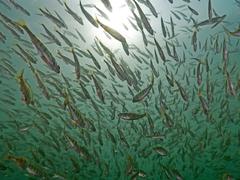
Researchers at Eawag and the Swiss Data Science Center have trained AI algorithms with a comprehensive ecotoxicological dataset. Now their machine learning models can predict how toxic chemicals are …

Pipe renewal in Brazil
How do you stop water loss through leaks in old pipe systems without major environmental impacts and restrictions? The answer: with trenchless technology, or more precisely …
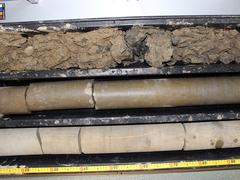
In a recently launched project, the aquatic research institute Eawag is investigating how the use of borehole thermal energy storage (BTES) affects the surrounding soil, the groundwater …
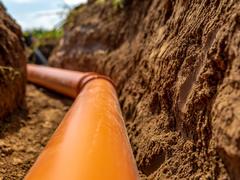
Watercare has successfully finished the final connection on the East Coast Bays link sewer at Windsor Park in New Zealand.
Much of the East Coast Bays sewer link was installed using horizontal directional …


